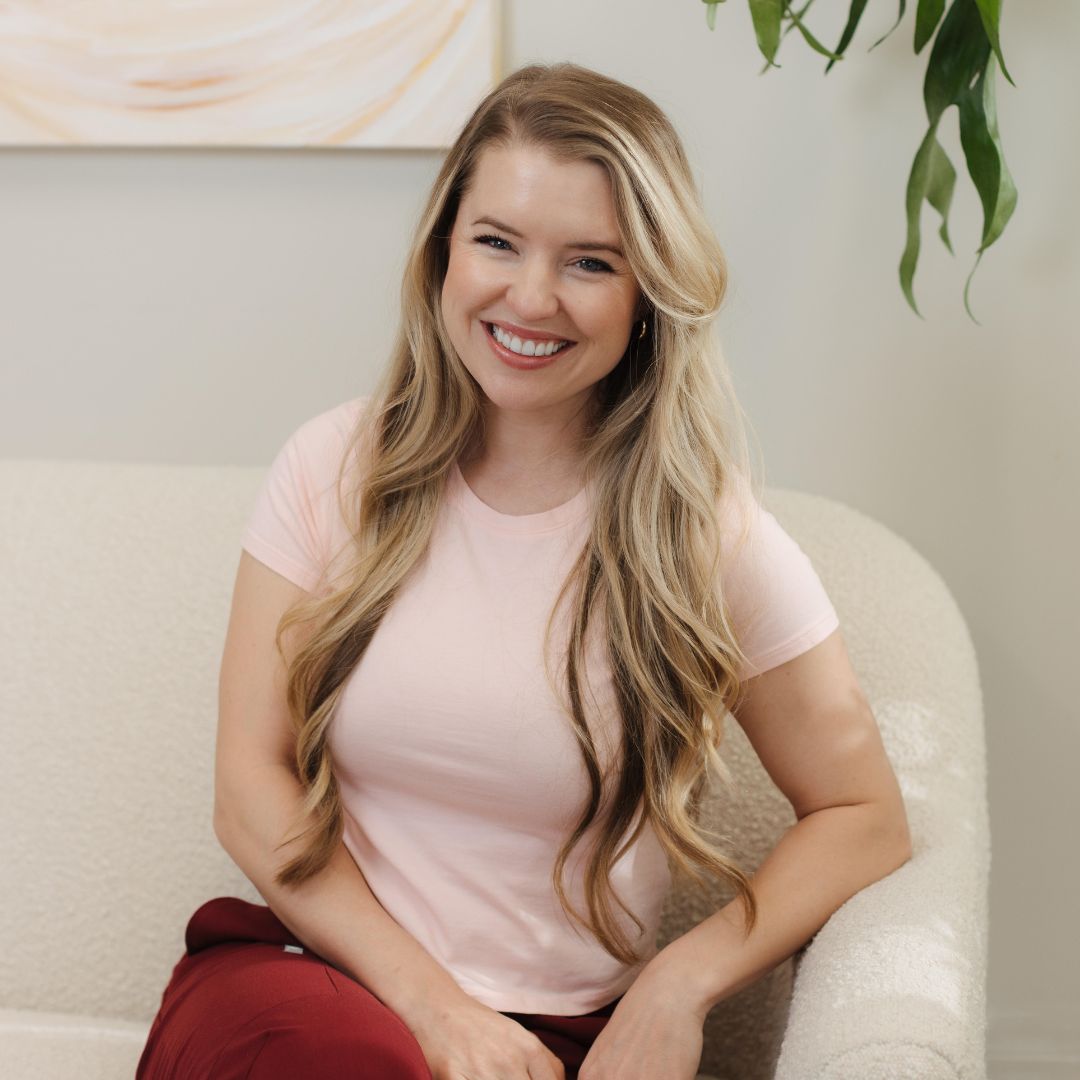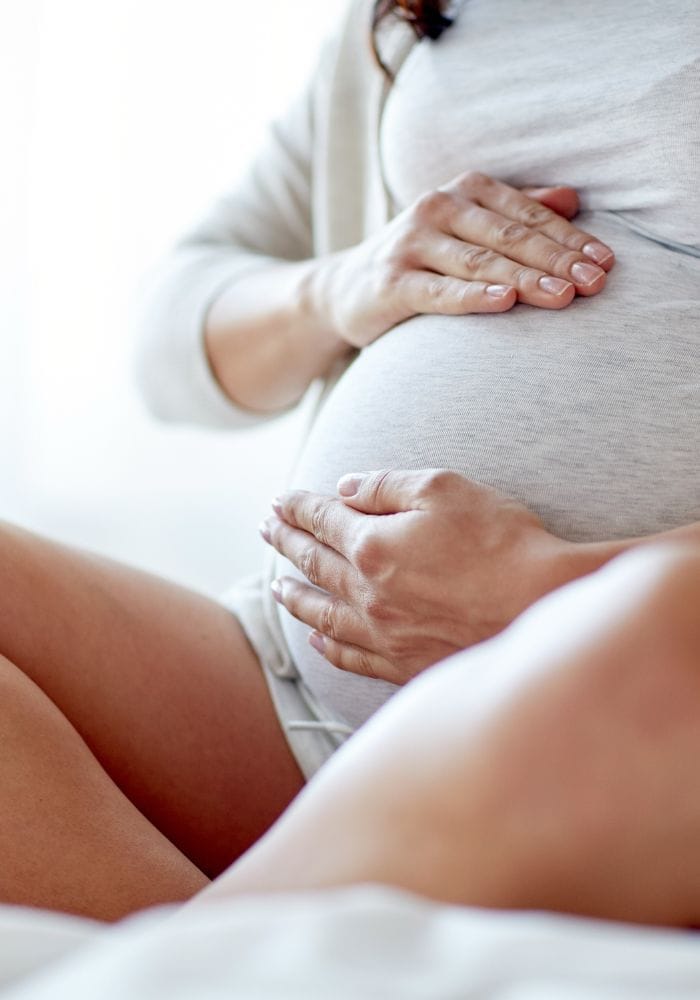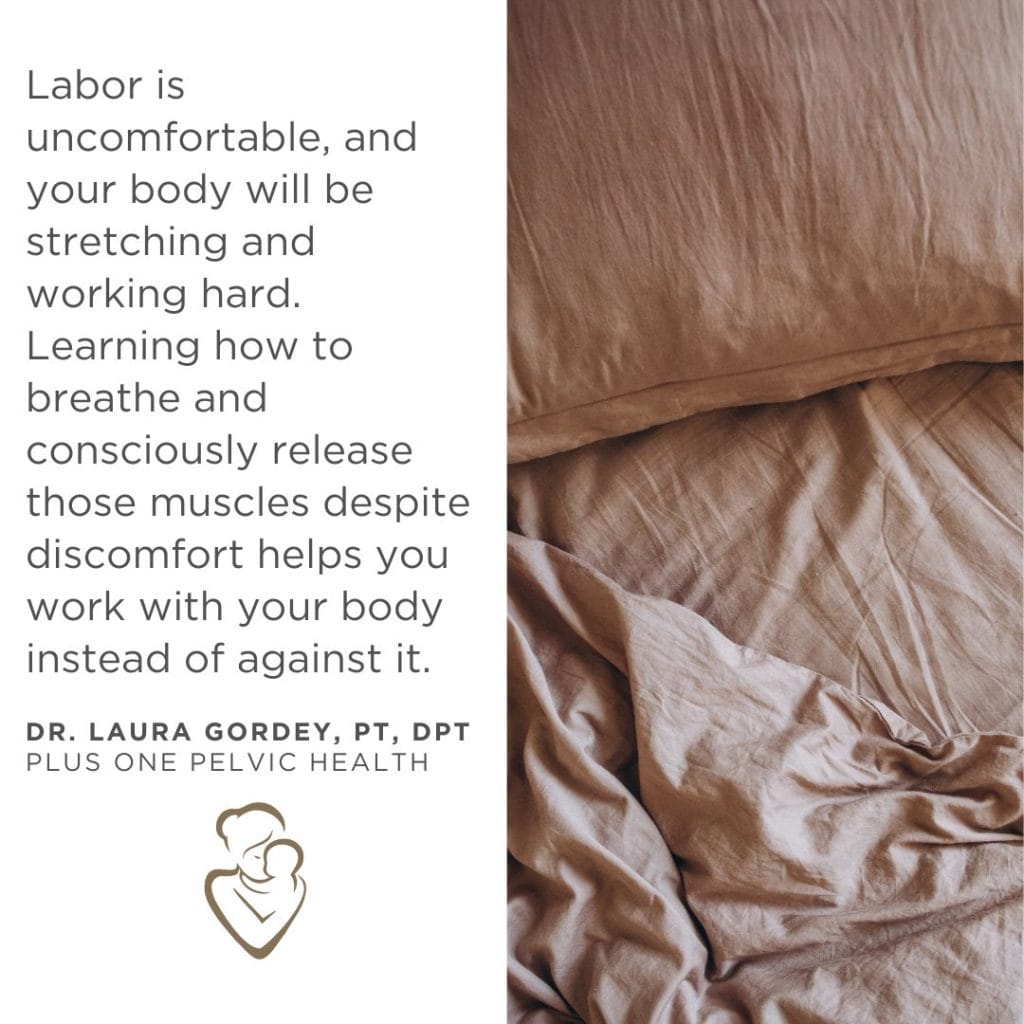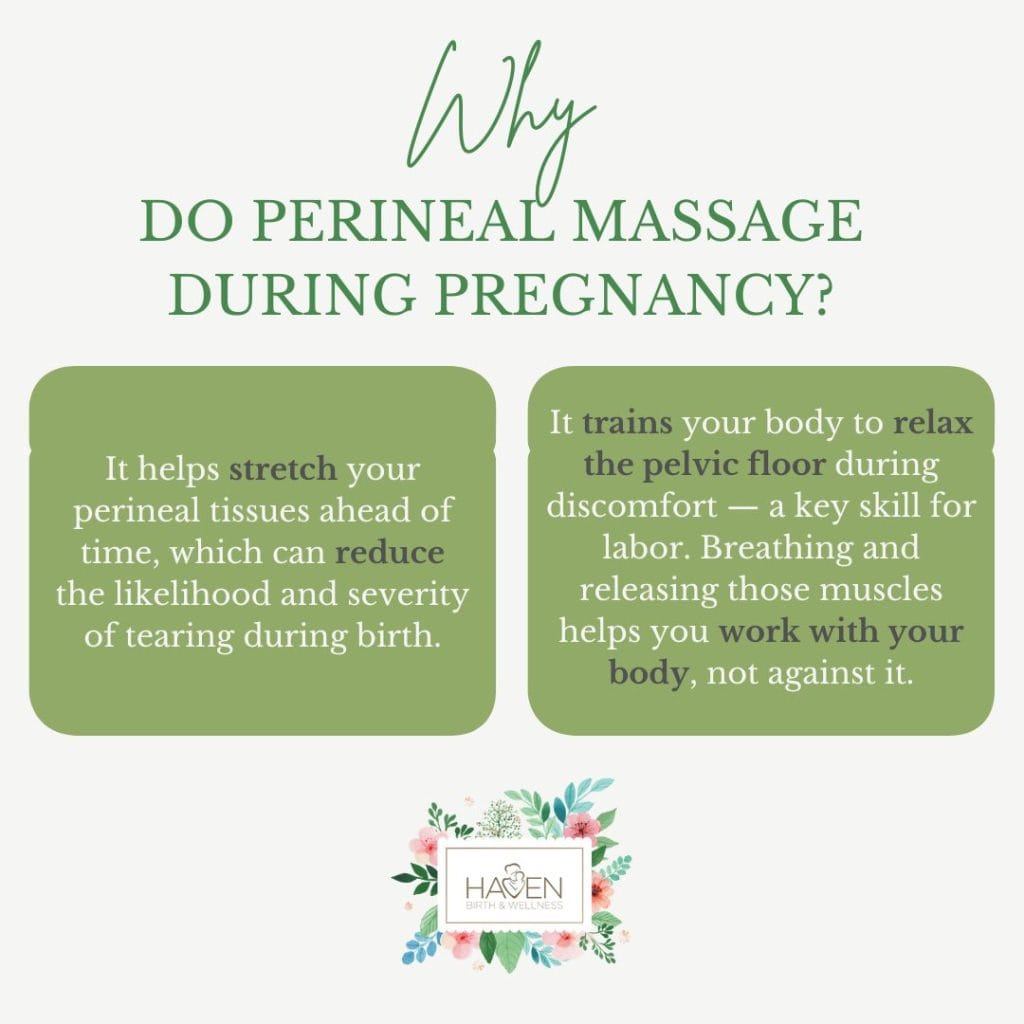

As a physical therapist specializing in pelvic health, one of the tools I regularly introduce to my third-trimester clients is perineal massage.
Just as pelvic floor exercises help prepare your muscles for the demands of labor and birth, perineal massage is a simple but powerful tool for preparing your perineal tissues as well.
Will perineal massage guarantee that you won’t tear? Unfortunately, no. But we have evidence that it reduces your risk — especially of more severe tears.
Let’s talk about what perineal massage is, why you might want to try it, and how to do it in a way that feels manageable and supportive to your body.
What Is Perineal Massage?
Your perineum is the little strip of tissue between your vagina and your anus. An anatomist might get more technical about the definition, but that’s how I describe it as a physical therapist in real life.
This area has to do a lot of stretching during birth. And since your pubic bone won’t be moving much, it’s the tissue between your vagina and anus — the lower part of the vaginal opening — that bears the brunt of the stretch.
To help clients picture where that stretch happens, I like to use the image of a clock. If you think of your vagina as a clock, your pubic bone sits at the 12 o’clock position and your anus is down at 6 o’clock. The greatest stretch during birth happens between 3 and 9 o’clock, or the bottom half of the clock.
And that’s where perineal massage can help.

Why Do Perineal Massage?
I recommend perineal massage for two main reasons:
- Stretching the tissues of the perineum ahead of time can help reduce the likelihood and severity of tears during birth. As someone who’s had births both with and without tears, I can emphatically say that not tearing is the better option.
- Practicing pelvic floor relaxation while experiencing some discomfort is an important skill for birth. Labor is uncomfortable, and your body will be stretching and working hard. Learning how to breathe and consciously release those muscles despite discomfort helps you work with your body instead of against it.
Who Could Benefit From Perineal Massage?
Though clinical research is still developing, I’ve seen firsthand how helpful perineal massage can be. It’s particularly recommended for:
- First-time vaginal births
- Those who’ve had previous tearing
- Anyone with a history of pain with sex or tampon use, which can indicate tension in the pelvic floor
Again, perineal massage isn’t a guarantee against tearing; it’s simply one measure you can take to reduce your risk, especially of severe tears. So, despite the potential benefits, I never want a mom to panic if she hasn’t tried perineal massage, or if she’s starting “late.”
First, any amount can help. Second, not doing it doesn’t mean you’re going to tear. So much of what happens during birth is out of your control — how fast baby comes, baby’s position, the need for interventions — and all of that matters too.
In my personal opinion, how you move and breathe during labor is even more important for preventing tears. So when it comes to birth, I recommend that you don’t overthink. Just do what you can and release what you don’t have time for.

How to Do Perineal Massage
As with many other practices, the “best” protocol for perineal massage is the one you’ll actually do.
When to Start
I usually recommend starting perineal massage around 28 weeks. That gives you time to develop a habit and figure out what works for your body. By the time you hit 32 to 34 weeks, you’re more confident and have a good month or so of regular stretching under your belt.
Frequency
I teach my clients how to do their own perineal massage at home so they don’t have to come in multiple times a week! Aim for 2–4 times per week, for 5–10 minutes each time.
Techniques and Tools
If you’re wondering what perineal massage might look like on the practical side, here are some pointers:
- Use your fingers, your partner’s fingers, or tools like dilators or pelvic wands to perform the stretch. Tools can be really helpful, especially if using your hands becomes difficult as your belly grows.
- I recommend using a lubricant, like Good Clean Love — a great water-based, fragrance-free option — or coconut oil. Always check with your provider to be sure what’s safe for you and baby at this time.
- Apply gentle pressure inside the vaginal opening from 3 o’clock to 9 o’clock — that bottom half of the vaginal “clock.” When you finish in one spot, you’ll move to the next.
- Insert only to the first or second knuckle. This isn’t about deep vaginal stretching; you’re only aiming to work with that first layer of muscle.
- Hold each stretch for 30 seconds to 2 minutes, depending on how it feels. If an area seems especially uncomfortable or stuck, spend a little more time gently stretching there.
- You want to feel discomfort — not pain. In physical therapy, we often say, “Feel the flame, but don’t burn your hand.” You should feel enough discomfort that you have to consciously relax and breathe, but never so much that you’re gritting your teeth or tensing up.
- As your belly grows, experiment with positions. Some people start by lying in the tub, but that may not work later in pregnancy. Find what’s manageable for you.
Perineal Massage: Final Thoughts
If you’re in your third trimester and wondering whether perineal massage is worth trying, I’d say, yes, go for it. Start small. Don’t overthink it. And let your body guide you.
The great news is it’s not just for stretching tissue. Perineal massage is also a great way to practice relaxation, to learn how your pelvic floor responds in discomfort, and to prepare — physically, emotionally, and mentally — for what’s ahead.
At the end of the day, perineal massage is really about showing up for your body with intention, curiosity, and compassion as you move closer to bringing your precious baby into the world.

Laura Gordey is a Doctor of Physical Therapy and the founder of Plus One Pelvic Health, where she supports women navigating pelvic health challenges. Her passion is rooted in both clinical expertise and personal experience, having walked through pelvic dysfunction, three birth journeys, and perinatal mood disorders herself. Laura holds advanced training in Pregnancy and Postpartum Corrective Exercise and Somatic Experiencing, with a focus on helping women heal, move confidently, and thrive in the bodies God designed.
Outside of her practice, Laura enjoys time with her family and continuing to learn alongside the women she serves.
